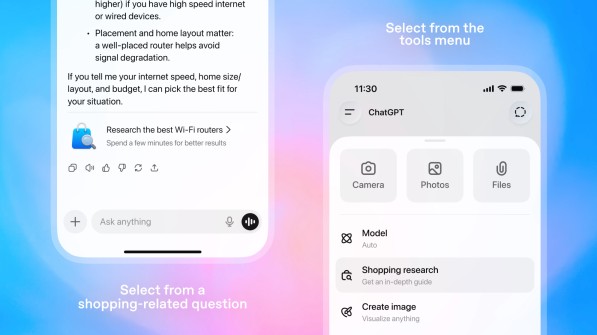How to Enact a 3P Strategy on Marketplaces
Learn the challenges and benefits of having a 3P on marketplaces and how an Amazon 3P strategy can help your brand grow.
More than 50% of all items sold on Amazon worldwide are from third party (3P) sellers. Amazon’s 3P sales are growing at a faster rate than first party (1P) sales on Amazon, showing that a 3P strategy can be a real tour-de-force for any brand willing to enter the fray. Becoming a 3P seller can be a daunting step for your business, but it can also be a great way to increase sales and the best avenue to pursue to take control of your brand online. As a top 3P partner on Amazon and other marketplaces, Pattern helps make the daunting step of switching to 3P more manageable and successful.
1P vs. 3P Seller Strategy
There are several methods for selling on Amazon, but two of the most common are 1P selling and 3P selling.
- In the 1P model, your brand operates as a wholesale supplier to Amazon, who handles most of the selling and pricing details.
- In a 3P model (or third party relationship), you are an independent seller on Amazon, making your own pricing and shipping decisions.
These models work for different brands for different reasons—buyers are more likely to trust 1P sellers because their product comes from Amazon, while 3P sellers have more access to data, visibility into product performance, and freedom to customize the purchasing experience.
Why Sellers are Switching from 1P to 3P
Brands are ultimately switching from 1P to 3P or taking a blended 1P/3P approach because they want more control in driving true profitability.
1. Brands Want More Control
In a 1P model, brands ship their product and then have very little control over what happens to it after that point. Amazon can sell 1P products at any price they choose, and brands have limited control over how much of their inventory is available at a given time. That can lead to lower margins and a lot of frustrations. Lack of control can also manifests itself in other ways, including taking a brand down the Profitability Death Spiral.
As a brand gets bigger on Amazon, it tends to experience more channel conflict, like unauthorized sellers interfering with 1P sales. Unauthorized (or gray market) sellers can easily distribute a brand’s products at marked down prices, eroding pricing across every one of that brand’s other channels and negatively impacting their reputation and distributor relationships.
2. 3P Can Lead to Greater Profitability
When brands have the right resources and partners, traffic and conversions will increase, ultimately driving more business on marketplaces. But first, a brand has to be in control. When a brand has no control online, things like marketing initiatives, displays, and pricing in their brick-and-mortar stores become tougher to prioritize and every corner of the business suffers.
This is where a high-quality partner steps in to fill the ecommerce gaps that executives face. An experienced 3P partner will help you know which actions influence ecommerce profitability factors and then guide you in optimizing your performance for better results.
Benefits and Challenges of a 3P Strategy
Here are a few of the benefits of a 3P strategy:
- A 3P strategy allows brands to take back the reins for inventory, pricing, distribution, content, and more.
- With a 3P strategy, instead of Amazon sending you purchase orders, you can dictate when you’re sending products into the ecosystem.
- You won’t get turned away during new product launches because of inventory issues.
- A 3P strategy can can give brands flexibility navigate unexpected marketplace policy changes
- If you have one 3P seller, you can have that seller distribute your whole catalog to keep your footprint on Amazon more comprehensive.
- 3P relationships are particularly effective when they’re exclusive because they maximize your control, leverage the expertise of your partners, and allow you the freedom to personalize the customer experience.
Here are a few of the challenges brands face with a 3P strategy:
- Switching to a 3P strategy can take a lot of time.
- Brands have to identify gray market sellers and create a coordinated strategy to prevent leaky distribution.
- Brands may face potential inventory risks, since they’re responsible for creating purchase orders and handling inventory logistics.
- Brands are responsible for their own customer service.
How to Enact an Effective 3P Strategy
Two steps are necessary for enacting an effective 3P strategy:
1. Get Your Authorized Sellers Under Control
The first step to having an effective 3P marketplace strategy is to get your authorized sellers under control. This takes creating necessary policies and agreements with your distributors, retailers, and co-ops that spell out how and when your product can be sold. To control authorized sellers, you’ll need to really define your channel.
2. Create a Legal Foundation to Control Unauthorized Sales
To control unauthorized sellers on marketplaces, brands often need things like special quality control programs and warranty qualifiers. With a solid legal foundation, you can both enforce your policies and support your exclusive sellers. Switching to a 3P strategy without necessary controls in place is a losing proposition. Without safeguards, your designated seller(s) can become lost in a sea of resellers that aren’t invested in your brand. You won’t be able to get sales, you won’t be able to begin to approximate your 1P sales, and the 3P strategy may fail. For a 3P strategy to be truly effective, brands need to be willing to put teeth to their policies and crack down on unauthorized selling activity.
Looking for a 3P Partner? Consider Pattern
While many brands have talented ecommerce teams, most don’t have the internal capabilities, numbers, or tools to get into the 3P space alone. Having a partner like Pattern by your side can not only give you the expertise and tools you need to grow long-term, it can also give you support that can’t be found in a 1P relationship. Contact Pattern to talk through your 3P strategy today.


.jpg)





.jpg)

